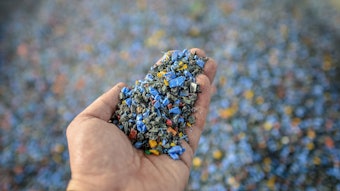
Researchers with Medytox in Korea have developed a mathematical model to predict the changes in volume of injected hyaluronic acid-based fillers over time. The goal of the study, published in Pharmaceutics (January 18, 2021), was to enable scientists developing novel dermal fillers to predict the in vivo behavior of fillers.
The need for a model is based on the fact that complete degradation of HA dermal fillers in a rodent model is difficult to evaluate due to the limited lifespan of rodents, the authors explain.
The mathematical model is as follows: The depot compartment (DEPOT) represents the injection site of the filler, and the subcutaneous compartment (SC) represents the subcutaneous volume. The compartments were separated to analyze the initial SC volume and the change in volume through the two processes of swelling and biodegradation, which were parameterized in terms of the swelling rate constant (Kswell) and degradation rate constant (Kdeg) using ADVAN6 and the first-order conditional estimation method with interaction (FOCE-I). Residual variability (RV) is evaluated using a proportional error model.
Each rate constant of the dermal filler kinetic model was assumed as log-normal distribution and described as Equations (1) and (2).
Kswell (day−1)= theta1 ⋅ expeta1
(1)
Kdeg (day−1)= theta2 ⋅ exptheta3 ⋅ eta1
(2)
The differential equations used to describe the final dermal filler kinetic model were as follows (Equations (3) and (4)).
dDEPOTdt= −Kswell × DEPOT
(3)
dSCdt= Kswell ×DEPOT− Kdeg × SC
(4)
They note that their model does not reflect the kinetics of semi-permanent or permanent fillers; only HA-based dermal fillers. In addition, it is limited by its use of only rodent data. “Further studies in mini-pigs, the skin structure of which is similar to human skin structure, would be beneficial in predicting dermal filler characteristics in humans,” they wrote.
Read the full paper here.











